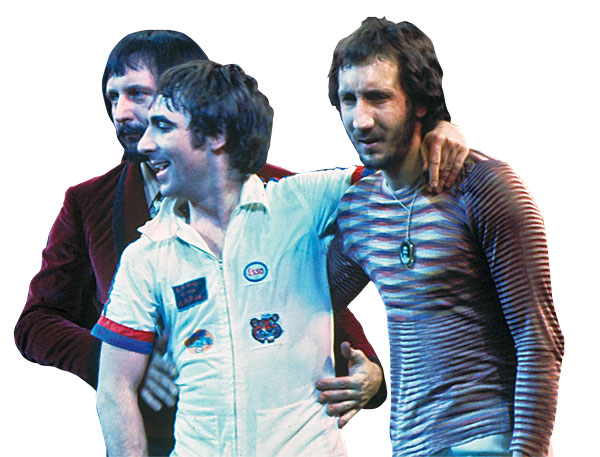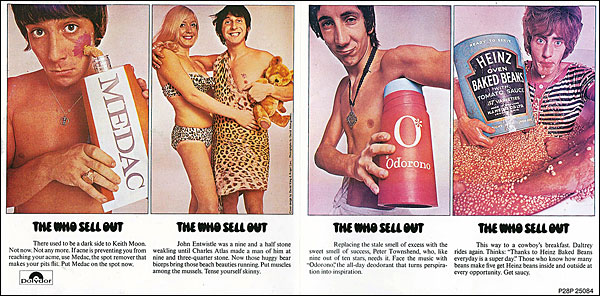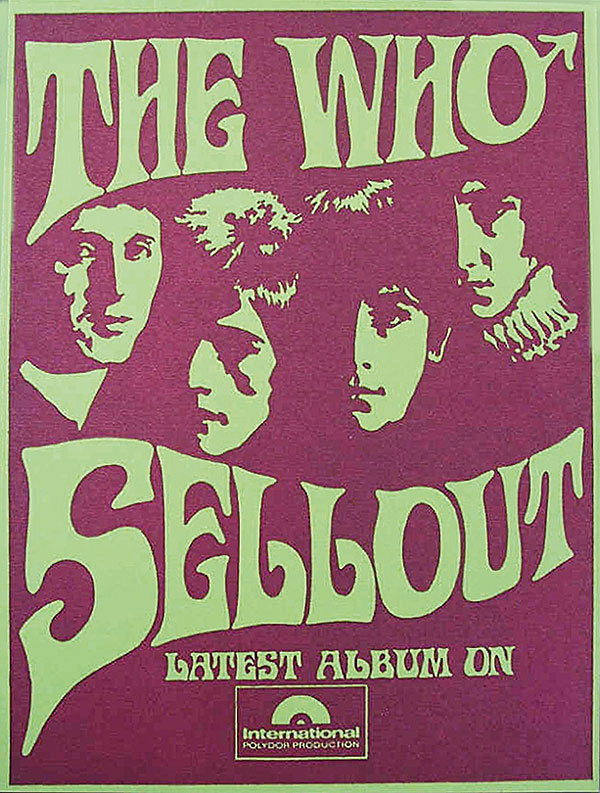Under the covers... The Who Sell Out Page 2

It evidently wasn't one of his favourite Who photoshoots, though. The sleeve, designed as a side hustle by The Sunday Times' Art editor David King and his old college friend Roger Law (who would later co-create TV show Spitting Image), required our heroes to show up at a London studio to be shot by New Yorker and celebrated lensman David Montgomery.

Spilling The Beans
Depending on whose account you choose to believe, either John Entwistle showed up late (possibly deliberately, having got wind of the plans for the shoot) and Daltrey was given the unenviable task of bathing in the beans, or Montgomery had a few issues with his equipment and left Daltrey in the tub for rather longer than originally intended. Either way, the singer famously fell ill as a result. In one interview he said, 'I ended up with a week in bed with either the flu or probably the worst cold that I've had in my lifetime and I put it down to the baked beans because they'd just come out of the fridge – they were freezing cold!'

After complaining about the cold during the shoot itself, he said, 'they had the great idea of putting an electric fire round the back of the bathtub, which worked for a while. It started to heat them up but then they started to cook. So my arse was roasting while my front was freezing and within 24 hours I was in bed with the sniffles.' Not that the band were complaining at the time, it seems. David King told the British photographer Rankin in a 2017 interview: 'They were very nice. Some rock 'n' roll guys. They'd been to art school for six months so they thought they knew it all'.
The sleeve we are talking about, of course, is the UK version. There were, though, several different versions of the sleeve made for different global markets.

Legal Action
The Canadian release changed the mention of Entwistle's 'Charles Atlas' programme to 'Isometrics' for some reason, while the Australian release has Keith Moon applying Clearasil rather than Medac. They didn't change the jingle on the album for Medac, but presumably there was some copyright or trademark issue somewhere that they wanted to steer clear of.

At the time the band were said to have been threatened with legal action for mentioning real products in their jingles and songs – perhaps the brands felt being associated with such a disreputable bunch of rock 'n' roll ruffians might negatively impact sales. Meanwhile, the hustler instincts of the band's managers even saw Kit Lambert approach Odorono for sponsorship funding. He was given short shrift.
Among the UK versions, the edition that is now highly sought-after is the original UK pressing on Track records (Track 612 002 – both mono and stereo versions), which included Adrian George's illustrated poster, flagged on the cover with a sticker reading 'Free psychedelic poster inside'. The 2012 reissue of the album reinstated the 20x30in poster but, of course, the original is the real holy grail for collectors.

Another way in which this album's packaging was pioneering was that it is believed to be the first by a British act not to feature the album's track listing on the sleeve. US band Moby Grape's debut from earlier that year had pulled the same trick, but this mystique-inducing approach hadn't yet caught on.

Proof Of Concept
That only heightened the sense that The Who were making one of the first of what would later become known as 'concept albums', with the theme made clear from the very first glance at the sleeve. It also helped The Who step away from the formidable shadow of The Beatles and set a platform for further creative adventures, such as their blueprinting of the rock opera with their 1969 release Tommy.
All told, then, for a record that took a satirical aim at the world of sales, branding and marketing, it was an expertly branded and marketed – and top-selling – example of the art form itself.



















































